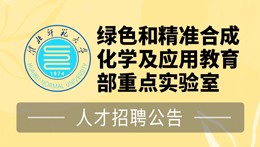当前位置:
X-MOL 学术
›
Pest Manag. Sci.
›
论文详情
Our official English website, www.x-mol.net, welcomes your
feedback! (Note: you will need to create a separate account there.)
Chemical structure‐biological activity of 1,4‐naphthoquinone analogs as potential Aedes aegypti larvicides
Pest Management Science ( IF 3.8 ) Pub Date : 2025-01-23 , DOI: 10.1002/ps.8656
Seong Jong Kim, Md Imdadul H. Khan, Alden S. Estep, Charles L. Cantrell, Hoang V. Le
Pest Management Science ( IF 3.8 ) Pub Date : 2025-01-23 , DOI: 10.1002/ps.8656
Seong Jong Kim, Md Imdadul H. Khan, Alden S. Estep, Charles L. Cantrell, Hoang V. Le

|
Background1,4‐Naphthoquinone compounds have shown pesticidal activity against Aedes aegypti larvae, a key vector of diseases such as dengue and Zika. However, limited knowledge of their structure–activity relationships has hindered their optimization for pesticide development. This study investigates the structure–activity relationships of 1,4‐naphthoquinone, particularly 2‐hydroxy‐1,4‐naphthoquinone and its derivatives.ResultsA series of 1,4‐naphthoquinones with modifications at the C‐2, C‐5, and C‐8 positions were synthesized and tested for larvicidal activities against Ae. aegypti . The presence of chlorine substituents at the C‐2 position significantly increased mosquito larval mortality. In contrast, 2‐hydroxy and 2‐methoxy groups were less effective, highlighting the importance of the C‐2 substituent in determining larvicidal activity. The compounds were tested on both pyrethroid‐susceptible Orlando 1952 (ORL1952) and permethrin‐resistant Puerto Rico (PR) strains of Ae. aegypti . While compound 1d exhibited the lowest median lethal concentration (LC50 ) against ORL1952 larvae, it showed minimal activity against the PR strain, which is resistant. The most promising compounds, 1 and 4a, showed LC50 values of 2.764 and 4.916 ppm in the ORL strain, and 2.548 and 4.878 ppm in the PR strain, respectively.ConclusionChlorine substitution at the C‐2 position of 1,4‐naphthoquinones enhances larvicidal activity against Ae. aegypti , while 2‐hydroxy and 2‐methoxy substitutions reduce efficacy. Certain compounds, such as 1 and 4a, show potential as broad‐spectrum agents effective against both susceptible and resistant strains of Ae. aegypti , highlighting their promise for further development as mosquito control agents. © 2025 Society of Chemical Industry.
中文翻译:

1,4-萘醌类似物的化学结构-生物活性作为潜在的埃及伊蚊杀幼虫剂
背景1,4-萘醌化合物已显示出对埃及伊蚊幼虫的杀虫活性,埃及伊蚊幼虫是登革热和寨卡等疾病的主要媒介。然而,对其结构-活性关系的了解有限阻碍了他们对农药开发的优化。本研究调查了 1,4-萘醌的结构-活性关系,特别是 2-羟基-1,4-萘醌及其衍生物。结果合成了一系列在 C-2、C-5 和 C-8 位置修饰的 1,4-萘醌,并测试了对 Ae 的杀幼虫活性。埃及。C-2 位置氯取代基的存在显着增加了蚊子幼虫的死亡率。相比之下,2-羟基和 2-甲氧基效果较差,突出了 C-2 取代基在确定杀幼虫活性方面的重要性。这些化合物在拟除虫菊酯敏感的 Orlando 1952 (ORL1952) 和耐氯菊酯的波多黎各 (PR) Ae 菌株上进行了测试。埃及。虽然化合物 1d 对 ORL1952 幼虫表现出最低的中位致死浓度 (LC50),但它对具有耐药性的 PR 菌株表现出最小的活性。最有前途的化合物 1 和 4a 在 ORL 菌株中显示 LC50 值为 2.764 和 4.916 ppm,在 PR 菌株中分别为 2.548 和 4.878 ppm。结论1,4-萘醌在 C-2 位点的氯取代增强了杀幼虫剂对 Ae 的活性。埃及,而 2-羟基和 2-甲氧基取代降低疗效。某些化合物,例如 1 和 4a,显示出作为对敏感和耐药 Ae 菌株有效的广谱试剂的潜力。埃及,突出了他们作为蚊子控制剂进一步发展的前景。© 2025 化工学会.
更新日期:2025-01-23
中文翻译:

1,4-萘醌类似物的化学结构-生物活性作为潜在的埃及伊蚊杀幼虫剂
背景1,4-萘醌化合物已显示出对埃及伊蚊幼虫的杀虫活性,埃及伊蚊幼虫是登革热和寨卡等疾病的主要媒介。然而,对其结构-活性关系的了解有限阻碍了他们对农药开发的优化。本研究调查了 1,4-萘醌的结构-活性关系,特别是 2-羟基-1,4-萘醌及其衍生物。结果合成了一系列在 C-2、C-5 和 C-8 位置修饰的 1,4-萘醌,并测试了对 Ae 的杀幼虫活性。埃及。C-2 位置氯取代基的存在显着增加了蚊子幼虫的死亡率。相比之下,2-羟基和 2-甲氧基效果较差,突出了 C-2 取代基在确定杀幼虫活性方面的重要性。这些化合物在拟除虫菊酯敏感的 Orlando 1952 (ORL1952) 和耐氯菊酯的波多黎各 (PR) Ae 菌株上进行了测试。埃及。虽然化合物 1d 对 ORL1952 幼虫表现出最低的中位致死浓度 (LC50),但它对具有耐药性的 PR 菌株表现出最小的活性。最有前途的化合物 1 和 4a 在 ORL 菌株中显示 LC50 值为 2.764 和 4.916 ppm,在 PR 菌株中分别为 2.548 和 4.878 ppm。结论1,4-萘醌在 C-2 位点的氯取代增强了杀幼虫剂对 Ae 的活性。埃及,而 2-羟基和 2-甲氧基取代降低疗效。某些化合物,例如 1 和 4a,显示出作为对敏感和耐药 Ae 菌株有效的广谱试剂的潜力。埃及,突出了他们作为蚊子控制剂进一步发展的前景。© 2025 化工学会.































 京公网安备 11010802027423号
京公网安备 11010802027423号